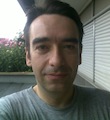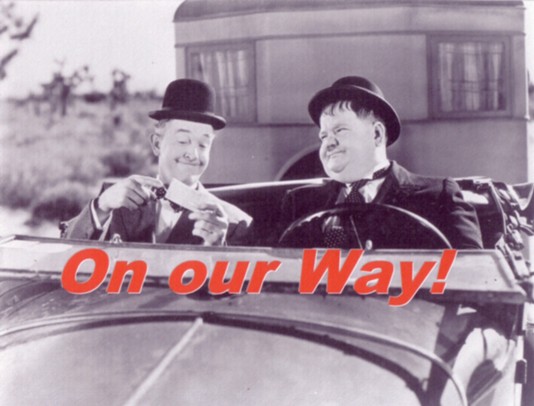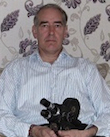|
Author
|
Topic: Making text in-camera on 8mm for movie title
|
|
|
|
|
|
|
|
|
Dominique De Bast
Film God

Posts: 4486
From: Brussels, Belgium
Registered: Jun 2013
|
 posted August 20, 2013 09:42 AM
posted August 20, 2013 09:42 AM




I assumed that your camera was a super 8 reflex one but from what you precised it looks like being a standard 8 (double 8) with the paralax problem (what you see throug the eyefinder is not exactly what you will see on the screen because of the distance between this eyefinder, or maybe it's called viewfinder in English, and the lens). It is not really a problem while you shoot from a certain distance but is not convenient when you shoot someting close. So, except if you are prepared to make tests to find exactly at which position and which distance you will see what, I would advide you to use only big letters (that you could for example put on a wall with the small rubbers that are used to hold photos or posters). Talking about a wall, if you know someone who is going to repaint one, don't hesitate to use it to make titles with paint (of course, take the opportunity to make several ones at one time, like "The End" titles for example). You can also, put letters on a big glass or a window (with the rubbers I mentionned) and shoot the title sharp and the rest not. If your camera is double 8, you can make surimpression by filming a white title on a black support and then rewind the film (in the dark of course). This is not as easy as it seems as you don't know exactly how many lenght of filmstock you should rewind and as the double exposure makes the picture a little bit darker. The time of cheap filmstock is over so trial and errors may be not a jouyfull option. A last thing, the focus depends on three things 1) the lens you use, the higher the number is, the more care you have to take for the focus 2) the distance, the further from the camera what you film is the less you have to care 3) the aperture, generally it goes from 1,8 to 16 or 22, the higher the figure is (and of course it needs more light), the deeper the focus field is and the less you have to care about. I don't like to post technical messages like this one as English is a foreign language for me, if anything is not clear, I appologize for it.
--------------------
Dominique
| IP: Logged
|
|
|
|
Matthew Smith
Junior
Posts: 20
From: Luton, England
Registered: Aug 2013
|
 posted August 20, 2013 11:50 AM
posted August 20, 2013 11:50 AM



Dominique De Bast: I appreciate the detailed reply. Yes I should have said, it is a kodak "brownie movie camera" with a f1.9 lens, which is just point and shoot and takes the older standard 8mm film yes. Yes you have to just look through the viewfinder and aim rather then looking directly through the lens. The only things that you can change is the aperture.
It will have parallax yes, though kodak added a little adjustable feature to the viewfinder so that if you are quite close to the subject you can compensate for that. I have a lot of experience shooting still film cameras, but I almost always use slr/tlr type cameras where you see what is in focus, though I have used box cameras where you also have only fixed focus and an adjustable aperture. The window/wall idea is very good thank you. I do not know anyone who is painting walls but I'm sure the other idea will work well. The film I am using is around iso 6 so it is incredibly slow, so the window method might be best for the light.
No problem I understood everything perfectly ![[Smile]](smile.gif)
Robert Crewdson: thanks. I see, yes if I have a choice I prefer slr/tlr type cameras when doing still photography as you know once and for all what is sharp and what is not, but I do appreciate fixed focus cameras like box cameras and my brownie movie camera, you just cannot comfortably shoot to the very minimum focus distance without risking making a blurry image. It would just be a big bonus if I could improvise a portrait/macro lens from a magnifying glass lens like you can easily with reflex cameras, so that I could do very close up scenes. I thought about doing some tests by putting some lenses over the brownie camera lens and hoping that one of them end up making a sharp image of close up subjects on the developed film, but it could become wild goose chase since theres so many factors that could go wrong. The easiest way to do that is maybe to disassemble the camera so that I can remove the lens and do manual tests like I would with a still camera, though I have a film in right now.
I thought about recording sound alongside the silent film I will be making but I'd like to keep it as traditional as possible, so it would seem wrong mixing digitally recorded sound with an old 8mm silent film, but I might consider it in the future if I really want the sound too.
| IP: Logged
|
|
|
|
|
|
|
|
Dominique De Bast
Film God

Posts: 4486
From: Brussels, Belgium
Registered: Jun 2013
|
 posted August 20, 2013 12:34 PM
posted August 20, 2013 12:34 PM




You can add sound on your film on a traditionnal way. You need to send it to a lab to add a strip and then you can record on the strip with a sound projector (of course, it's an investment, so you may consider it when you have a little amount of films). To get back to the titling, whatever you will do, it will have to be in bright light with a stock like this (of course, you can also use a faster stock later and shoot your titles then and splice them). As, in your case, big letters seem to be the best option, you can also use what you have close to you and linked with the film. It can be sand if it starts at the beach, it can be dust and so on. I mentionned a wall but it can also be someting written with chalk on the pavment. I don't know if it could help you, but it is possible to add (I don't know if it is on your camera) a close up lentil on the lens. Before you open your camera with all the risks that could lead to, try to see if you cannot find something like that if you think that you really need to shoot close (with the parralax problem). About the linked you gave, I think that the problem with the second title is that there was an exposure problem. It was probably automatic and the aperture was too high (because the background was dark).
--------------------
Dominique
| IP: Logged
|
|
|
|
|
|
Matthew Smith
Junior
Posts: 20
From: Luton, England
Registered: Aug 2013
|
 posted August 20, 2013 01:11 PM
posted August 20, 2013 01:11 PM



Robert Crewdson: Ok I see, I thought about how it could work from the information I could find, and I thought it must perhaps work that way. My camera's minimum focus distance is 2ft at f16, though with my incredibly slow film I will not be able to film at f16, maybe if I shoot directly into very strong light though or push process the film. It cannot rewind unfortunately, though because the film is so slow you can use it with a darkroom red light so I could open the camera and manually rewind it inside the camera, thanks for the idea I understand now how that method must work, that sounds great for a professional look. I think Dominique mentioned that method earlier but I realize now that I must have misunderstood what he actually meant. Ah yes I've seen that advertisement, it was nice to see. Mine is the "model II" so it has a f1.9 lens and the viewfinder is unfortunately plastic rather than that one's metal one. Exactly like this one: http://cdn.iofferphoto.com/img/item/952/824/75/6gaeSjekwZUVoED.jpg
Dominique De Bast: Ah yes I've read you can add a sound stripe, it is a possible option for the future yes. Great ideas thanks. Kodak did apparently only make a wide angle and telephoto lens for the camera. The camera looks quite simply mechanically but I would be very careful in disassembling it, it does have big obvious screws though and looks in general like it would not hurt it to take it apart. I understand now what you meant about rewinding the film with white letters on black and superimposing the text, I misunderstood originally, this idea sounds very good so I may try that. Though my camera does not have a rewind function, because the film is so slow I can open it in a darkroom with a red light and probably manually rewind it myself to do this.
Gerald Santana: alright thank you.
| IP: Logged
|
|
|
|
|
|
|
|
|
|
|
|
|
|
Matthew Smith
Junior
Posts: 20
From: Luton, England
Registered: Aug 2013
|
 posted August 21, 2013 08:51 AM
posted August 21, 2013 08:51 AM



Dominique De Bast: I think I understand what you mean, just a lens that you add onto the existing lens. The default lens that comes with the camera cannot be screwed off anyway, I have tried, it is meant to stay on like a point and shoot camera. The lenses they sold work the same way you describe, you are meant to put them onto the existing lens, but it seems they only made a telephoto and wide angle lens. It can only shoot at one speed unfortunately, it is about 1/35 of a second/16fps. It does have a screw in the lens for the addon lenses, but it I don't believe any other company made addon lenses for this model camera. But maybe you can buy a non-kodak close up lens and fasten it yourself to make it work.
Robert Crewdson : Thanks for the tips. Maybe if you underexposed the background a bit it could also help. I don't have a blackboard have a large piece of black plastic and cardboard lying around that could work. I will make a post about it once I see the results yes.
Joe Taffis : I see yeah sometimes the low-tech method is the easiest and best. If I try using cutout letters I might try blutac as someone else suggested.
Bruce Wright : Ok, I was tempted to make the title in fancy style but I also realized its hard to make fancy lettering without thin parts, as the thicker the letters the clearer it will probably end up on the film, so I will probably stick with very basic letters. thanks, I am looking forward to seeing the results. It will be in splatter horror comedy style and if it turns out well I will be very pleased.
Pete Richards : thanks that is a good example yes, you don't often see more creative diy titles like that in modern tv/film which isn't done digitally.
Winbert Hutahaean: I read that thread yes when I was searching for alternative methods, but I would like to do something more DIY/low-tech. thanks.
| IP: Logged
|
|
|
|
|
|
|
|
Steve Klare
Film Guy

Posts: 7016
From: Long Island, NY, USA
Registered: Jun 2003
|
 posted August 21, 2013 07:41 PM
posted August 21, 2013 07:41 PM



OK, this is just a little computer based!
Microsoft had no idea when they brought out Word that they were actually creating a wonderful movie titler. (I'm guessing they had no idea how useful Excel is for creating a cut list for editing either...)
I take a blank document. I format it "landscape". I insert any picture I want full page sized. I put a text box anywhere I want on the picture (clear, no border) and choose text from multiple typefaces, sizes, effects and colors.
I print it 8.5" by 11", surround the picture with a black border and film it on the floor with a camera on a tripod pointed straight down and zoomed until the title fills the frame.

This is from a film I just finished about my son and me spending the weekend at CineSea 6. This title comes just before our trip to Wildwood starts, and fits the "film about film" theme this one was about.
I drove, so I guess that makes me "Ollie".
--------------------
All I ask is a wide screen and a projector to light her by...
| IP: Logged
|
|
|



 UBBFriend: Email this page to someone!
UBBFriend: Email this page to someone!
 Printer-friendly view of this topic
Printer-friendly view of this topic






![[Smile]](smile.gif)






